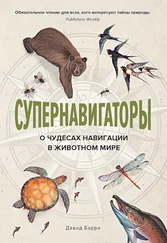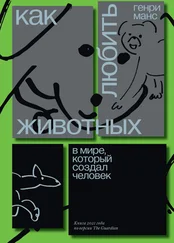Sauer, E. F., & Sauer, E. M. (1960, January). ‘Star Navigation of Nocturnal Migrating Birds: The 1958 Planetarium Experiments’, in Cold Spring Harbor Symposia on Quantitative Biology (Cold Spring Harbor Laboratory Press), vol. 25. P. 463–473.
Passerina cyanea.
Emlen, S. T. (1967). ‘Migratory orientation in the indigo bunting, passerina cyanea. Pt I: Evidence for use of celestial cues’, The Auk, 84 (3). P. 309–342. И: Emlen, S. T. (1967). ‘Migratory orientation in the Indigo Bunting, Passerina cyanea. Pt II: Mechanism of celestial orientation’, The Auk, 84 (4). P. 463–489.
Emlen, S. T. (1975). ‘The stellar-orientation system of a migratory bird’, Scientific American, 233 (2). P. 102–111.
Mouritsen, H., & Larsen, O. N. (2001). ‘Migrating songbirds tested in computer-controlled Emlen funnels use stellar cues for a time-independent compass’, Journal of Experimental Biology, 204 (22). P. 3855–3865.
Puffinus puffinus.
Strycker, N. K., The Thing with Feathers: The Surprising Lives of Birds and What They Reveal about Being Human (Riverhead Books, 2014).
Ig Nobel Prize . Уоррент и Дакке получили ее в 2013 г.
С 1967 по 1982 г. в Австралии успешно интродуцировали 29 видов навозных жуков (из них 22 вида – из Африки).
Этим занимаются далеко не все навозные жуки. Многие виды закапывают навоз там же, где его находят. Другие просто живут в навозе.
Baird, E., Byrne, M. J., Smolka, J., Warrant, E. J., & Dacke, M. (2012). ‘The dung beetle dance: an orientation behaviour?’, PLoS One, 7 (1), e30211.
Dacke, M., Nilsson, D. E., Scholtz, C. H., Byrne, M., & Warrant, E. J. (2003). ‘Animal behaviour: insect orientation to polarized moonlight’, Nature, 424 (6944). P. 33.
Dacke, M., Baird, E., Byrne, M., Scholtz, C. H., & Warrant, E. J. (2013). ‘Dung beetles use the Milky Way for orientation’, Current Biology, 23 (4). P. 298–300.
Ночная бабочка Noctua pronuba.
Sotthibandhu, S., & Baker, R. R. (1979). ‘Celestial orientation by the large yellow underwing moth, Noctua pronuba L.’, Animal Behaviour, 27. P. 786–800.
Talitrus saltator .
Ugolini, A., Hoelters, L. S., Ciofini, A., Pasquali, V., & Wilcockson, D. C. (2016). ‘Evidence for discrete solar and lunar orientation mechanisms in the beach amphipod, Talitrus saltator Montagu (Crustacea, Amphipoda)’, Scientific Reports, 6.
Phoca vitulina.
Mauck, B., Gläser, N., Schlosser, W., & Dehnhardt, G. (2008). ‘Harbour seals (Phoca vitulina) can steer by the stars’, Animal Cognition, 11 (4). P. 715–718.
Недавний обзор навигации по звездам у животных см.: Foster, J. J., Smolka, J., Nilsson, D. E., & Dacke, M. (2018, January). ‘How animals follow the stars’, in Proc. R. Soc. B., vol. 285, no. 1871. P. 20172322, The Royal Society.
Здесь и далее цит. по изд.: Фабр Ж. А. Инстинкт и нравы насекомых: Из «Энтомологических воспоминаний» Фабра / Пер. с фр. Е. И. Шевыревой; под ред. ученого секретаря Русского энтомологического общества Ив. Шевырева. В 2 т. М.: Терра, 1993. Т. 2. С. 443, 444.
Saturnia pyri – размах крыльев этой бабочки достигает 20 см. [Другие русские названия – павлиноглазка грушевая и сатурния грушевая. – Прим. перев.]
Fabre, J- H., Souvenirs Entomologique, série VII, ch. 23.
Farkas, S. R., & Shorey, H. H. (1972). ‘Chemical trail-following by flying insects: a mechanism for orientation to a distant odor source’, Science, 178 (4056). P. 67–68.
Kennedy, J. S., Ludlow, A. R., & Sanders, C. J. (1980). ‘Guidance system used in moth sex attraction’, Nature, 288 (5790). P. 475–477.
Martin, H. (1965). ‘Osmotropotaxis in the honey-bee’, Nature, 208 (5005). P. 59–63.
Borst, A., & Heisenberg, M. (1982). ‘Osmotropotaxis in Drosophila melanogaster’, Journal of Comparative Physiology A: Neuroethology, Sensory, Neural, and Behavioral Physiology, 147 (4). P. 479–484.
Steck, K., Knaden, M., & Hansson, B. S. (2010). ‘Do desert ants smell the scenery in stereo?’, Animal Behaviour, 79 (4). P. 939–945.
Hasler, A. D., & Scholz, A. T. (2012). ‘Olfactory imprinting and homing in salmon: Investigations into the mechanism of the imprinting process’, Springer Science & Business Media. Vol. 14. P. xii.
Nevitt, G., & Dittman, A. (1998). ‘A new model for olfactory imprinting in salmon’, Integrative Biology: Issues, News, and Reviews, published in association with The Society for Integrative and Comparative Biology, 1 (6). P. 215–223.
Dittman, A., & Quinn, T. (1996). ‘Homing in Pacific salmon: mechanisms and ecological basis’, Journal of Experimental Biology, 199 (1). P. 83–91.
Gatty, H., Finding Your Way Without Map or Compass (Dover Books, 1983). P. 32, 33.
Запах и вкус состоят в близком родстве, но за их восприятие отвечают разные органы чувств, расположенные, соответственно, в носу и во рту. Их сочетание и образует наше ощущение от пищи. Я сосредоточу свое внимание только на запахе.
Цит. по изд.: Аристотель . О душе / Пер. с др. – греч. П. С. Попова. М.: Соцэкгиз, 1937.
Aristotle, On the Soul, II.9.
Aristotle, Sense and Sensibilia II.5. [В русском переводе: Аристотель. Протрептик. О чувственном восприятии. О памяти / Пер. с др. – греч. Е. В. Алымовой). СПб.: Изд-во СПбГУ, 2004.]
McGann, J. P. (2017). ‘Poor human olfaction is a 19th-century myth’, Science, 356 (6338), eaam7263.
Darwin, C., The Descent of Man, pt 1. P. 17, 18.
Freud, S., Drei Abhandlungen zur Sexualtheorie (F. Deuticke, 1905). P. 83. Цит. в McGann (2017), op. cit. [В русском переводе: Фрейд З. Три очерка по теории сексуальности // Психология бессознательного. М.: Просвещение, 1990. С. 123–199. – Прим. перев.]
Читать дальше
![Дэвид Барри Супернавигаторы [О чудесах навигации в животном мире] [litres] обложка книги](/books/393891/devid-barri-supernavigatory-o-chudesah-navigacii-v-cover.webp)


![Лайза Николь - Винсент и Самый Необыкновенный Отель в Мире [litres]](/books/392769/lajza-nikol-vinsent-i-samyj-neobyknovennyj-otel-thumb.webp)
![Роберт Хофрихтер - Таинственная жизнь грибов. Удивительные чудеса скрытого от глаз мира [litres]](/books/393118/robert-hofrihter-tainstvennaya-zhizn-gribov-udivit-thumb.webp)
![Антон Серовский - Воплощение в подлунном мире [litres]](/books/393561/anton-serovskij-voplochenie-v-podlunnom-mire-litre-thumb.webp)

![Пема Чодрон - Приветствуя трудности [Как жить полноценной жизнью в несовершенном мире] [litres]](/books/400446/pema-chodron-privetstvuya-trudnosti-kak-zhit-polnoc-thumb.webp)
![Барри Пэйн - Новый Гулливер [Затерянные миры. Том XXIV]](/books/406917/barri-pejn-novyj-gulliver-zateryannye-miry-tom-xx-thumb.webp)
![Ирина Млодик - Ограниченные невозможности. Как жить в этом мире, если ты не такой, как все [litres]](/books/418655/irina-mlodik-ogranichennye-nevozmozhnosti-kak-zhit-thumb.webp)
![Дэвид Бишоф - Чужие - Геноцид. Чужая жатва [сборник, litres]](/books/421774/devid-bishof-chuzhie-genocid-chuzhaya-zhatva-sbornik-thumb.webp)
![Элиф Шафак - 10 минут 38 секунд в этом странном мире [litres]](/books/433725/elif-shafak-10-minut-38-sekund-v-etom-strannom-mire-thumb.webp)
